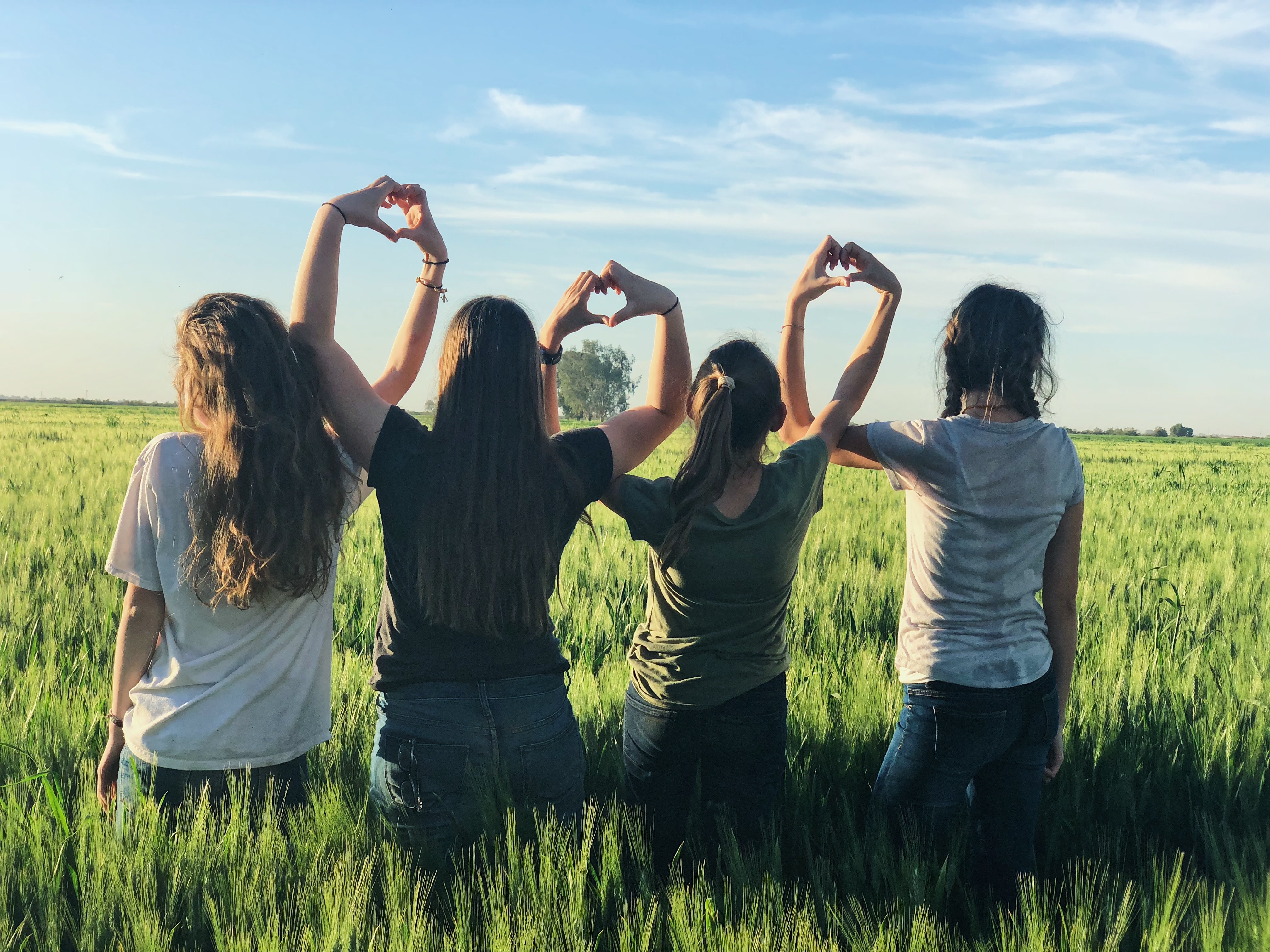6 Easy Ways You and Your Kids Can Start Practicing Gratitude
What is Gratitude?
Gratitude is a form of positive thinking that can bring happiness and peace into your life. Most people would say that it’s simply being thankful for the good things in your life, but there’s actually a lot more to it than that. Practicing gratitude can have some amazing benefits for your health, your happiness, and even your relationships. So, when you think about it, gratitude is a pretty amazing thing. Being grateful for the good things in your life – and even for the bad things, because they have made you stronger – can completely change your outlook on life.
So, Gratitude is perhaps the coolest Attitude; do you agree?
This blog post will explore what gratitude is, the benefits of practicing gratitude regularly and methods to practice gratitude to reap it’s benefits.
What is the Power of Gratitude?
When we live in a state of gratitude, we establish an energetic alignment with the creative force of the universe and become a magnet for all that we require. As we go about our lives in this state, we will notice how effortlessly we receive the gifts that have been given to us. In other words, when we are feeling grateful, our experiences will reflect that vibration.
Our thoughts about ourselves and this world create the reality that we live in. This is what has become known as The Law of Attraction . It is not some new age concept; it is simply an understanding of how energy flows and manifests into form. Everything you experience in your life, you are attracting through the energy of your thoughts and feelings.
If you want to change your future, all you have to do is concentrate on that which you desire to manifest in your life. You create your own reality by directing the flow of energy with your thoughts and intentions. It is not always easy to keep our thoughts focused, especially when we aren’t feeling positive.
This is where the power of gratitude comes in. If you find that your thoughts are straying from your desires, simply bring yourself back into a state of appreciation by remembering how blessed you are right now helps you realign to your desired life.
When we live in a state of constant gratitude, we become open to receiving the gifts and blessings that have been given to us. When we express a state of appreciation, we must accept that what we have been given is a gift. It might not be the outcome, person or thing you were hoping for, but it is a gift nonetheless.
What you want and focus on manifests in your life in some form. So if you are experiencing something undesirable, simply know that by giving thanks for everything you already have, you are creating a space for more to flow into your life.
Scientifically, the more often you spend being thankful in your life your body produces higher levels of endorphins, serotonin and dopamine. So, spending some extra minutes each day thinking about how lucky you are can really change everything for you.
What are the Benefits of Practicing Gratitude?
The benefits of gratitude are proven to be numerous, including improved mental health and improved relationships as well as decreased stress and anxiety. Here are some-
1. Gratitude is the Key to Happiness:
Have you ever wondered how many people living in such poor countries with very little look the happiest? Research shows that people who practice gratitude on a regular basis tend to be happier than those who don’t. When people have little, they usually are thankful for what they have than people who have so much more and are always thinking of how to get more.
2. Gratitude helps build better relationships:
Practicing gratitude is good for the soul and it improves our relationships with others and ourselves by making us more compassionate and understanding.
3. Gratitude can improve your lifestyle
A grateful attitude will help you be more optimistic and less stressed out about life’s challenges, and don’t we all know that most 21st century health issues are caused by stress?
4. Gratitude can improve your mental wellbeing
Gratitude can improve your mood and mental health. Practicing Gratitude is a powerful tool for combating depression and anxiety.
5. Gratitude can help build Better Self Image
People who practice gratitude have better self-esteem and higher levels of energy as when you’re in a state of gratitude, you are operating in one of the highest frequencies your body can generate.
How to practice Gratitude?
So, now you know the benefits of practicing Gratitude, it’s time to practice it to reap these benefits. Practicing gratitude doesn’t have to cost anything – it’s all about how much time you’re willing to invest in yourself! Here are some gratitude examples that you can start practicing gratitude in lifetoday.

1. Write down 3 things you’re thankful for today.
Keep a gratitude journal to record what you are thankful for. Journaling has it’s own amazing benefits. This probably is something you’ve heard of so often- It sounds so simple, but when you write, you are slowing your thought process. And once you’ve done this enough times, gratitude becomes your default state and part of your personality. So, start today- Make time to reflect on all the good in your life and everything that has gone well. This exercise will boost your confidence and self esteem. Just start with writing down 3 things you’re grateful for every day.

2. Savor the Good Vibes
Practice mindfulness by focusing on your breathing and being aware of your surroundings and being thankful to the Universe for providing everything we need to live- the fresh air you breathe, the water from the rain, the soft grass on your feet, the trees that provide shade. Simply acknowledging this and feeling grateful for it will bring joy and love to your heart.
And the next time something great happens, take some time to enjoy it instead of rushing off to do something else. Make mental notes, immerse in it completely and savour every bit of the experience.

3. Be Helpful
Take some time out of your day to do something nice for someone else, even if it’s just holding open a door or giving up your seat on the bus.
Find ways to volunteer at your community, church or charity- there are so many opportunities available where you can help others without having any experience.

4. Reflect on your reading
Read and listen to inspirational books and bookmark quotes. Then take time to reflect on them.

5. Support your tribe
Make a list of all the people who make your life better, then text them something nice and spend time with these people, who make you feel good about yourself.

6. Count your blessings
This old adage is so true. Think about how lucky you are- A lot of people don’t even have food on their table – being grateful for what you have helps you build compassion for others- and compassion is another high frequency emotion.
You can still be in a state of gratitude when times are tough. When things don’t go to plan, write it down, and write down the learning you received from it. This way you can truly thrive in this state of blissful gratitude.
Practicing Gratitude for Kids
Now you know that it’s not too difficult to practice this wonderful virtue of being in gratitude, in fact it’s so simple and even young children can learn how to start practicing gratitude. They can start with these gratitude exercises.
1. Basics- Start by teaching them to say “thank you” and “please”
2. Have kids write thank-you cards to people who have helped them in some way – teachers, coaches, parents.
3. Teach children about how other people live around the world so they can appreciate what they have more easily.
4. Give older kids a journal as a gift to write in.
5. Share what you are grateful for at the dinner table- and encourage children to participate in sharing.
6. Teach children how to give back by asking them to help with packing their clothes and toys for donation.
7. Encourage them to be thankful for what they have instead of focusing on what they don’t have.
8. Give them a jar to keep track of everything they are grateful for
9. Read books on the subject of Gratitude with your child.
Conclusion
Although this practice could seem like it’s completely different to your current personality, Gratitude is a habit that can be developed. It might look like there’s just too much to do, but honestly, you don’t have to do all of them. You simply start with one practice that’s most easy for you to do and make this a habit before you move onto the next one. Gratitude truly is a great place to begin with your journey towards Personal Development.
References
- Nicola Petrocchi & Alessandro Couyoumdjian (2016) The impact of gratitude on depression and anxiety: the mediating role of criticizing, attacking, and reassuring the self, Self and Identity, 15:2, 191-205, DOI: 10.1080/15298868.2015.1095794
- Kong, F., Ding, K. & Zhao, J. The Relationships Among Gratitude, Self-esteem, Social Support and Life Satisfaction Among Undergraduate Students. J Happiness Stud 16, 477–489 (2015). https://doi.org/10.1007/s10902-014-9519-2
- Fogarty CT. Compassion, gratitude and awe: The role of pro-social emotions in training physicians for relational competence. The International Journal of Psychiatry in Medicine. 2020;55(5):314-320. doi:10.1177/0091217420952223

